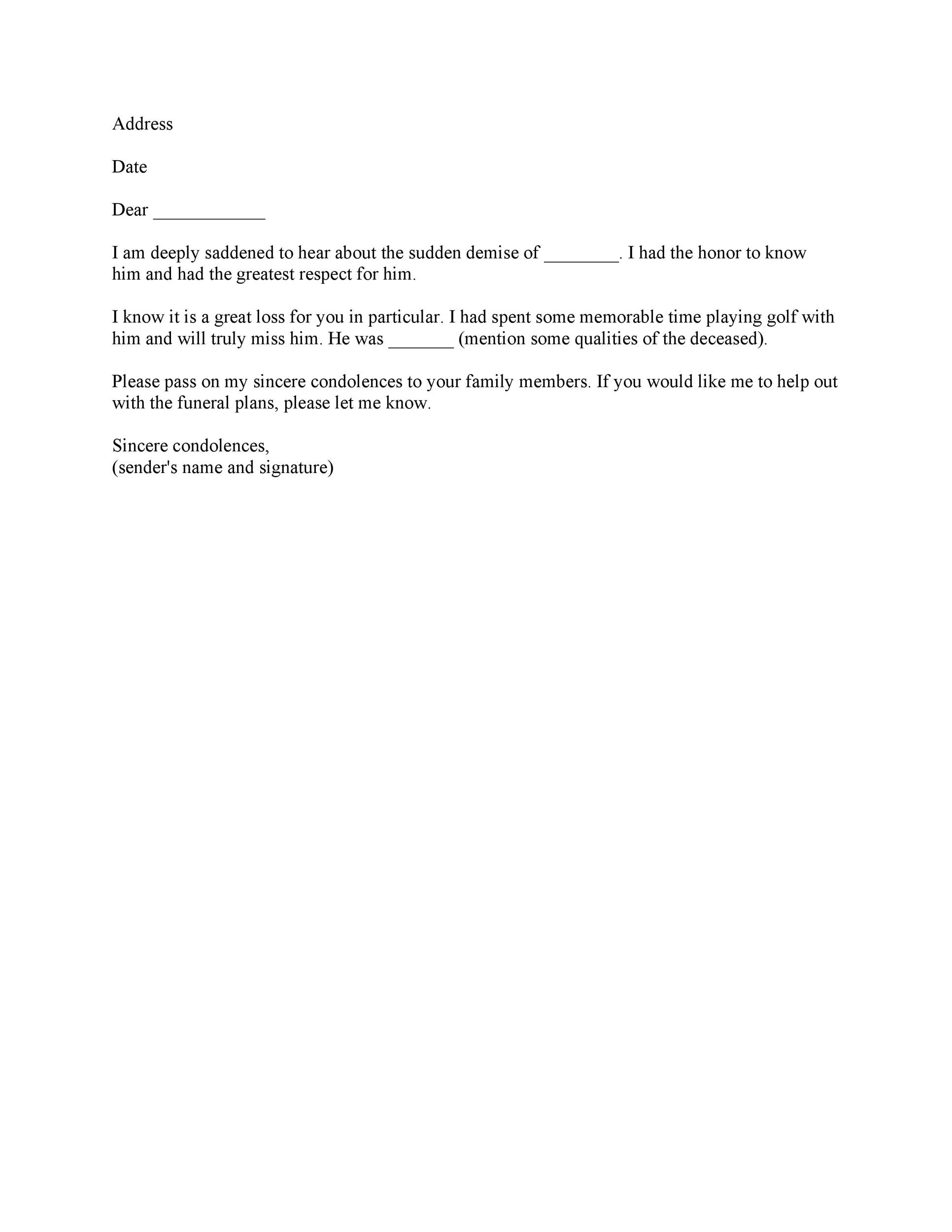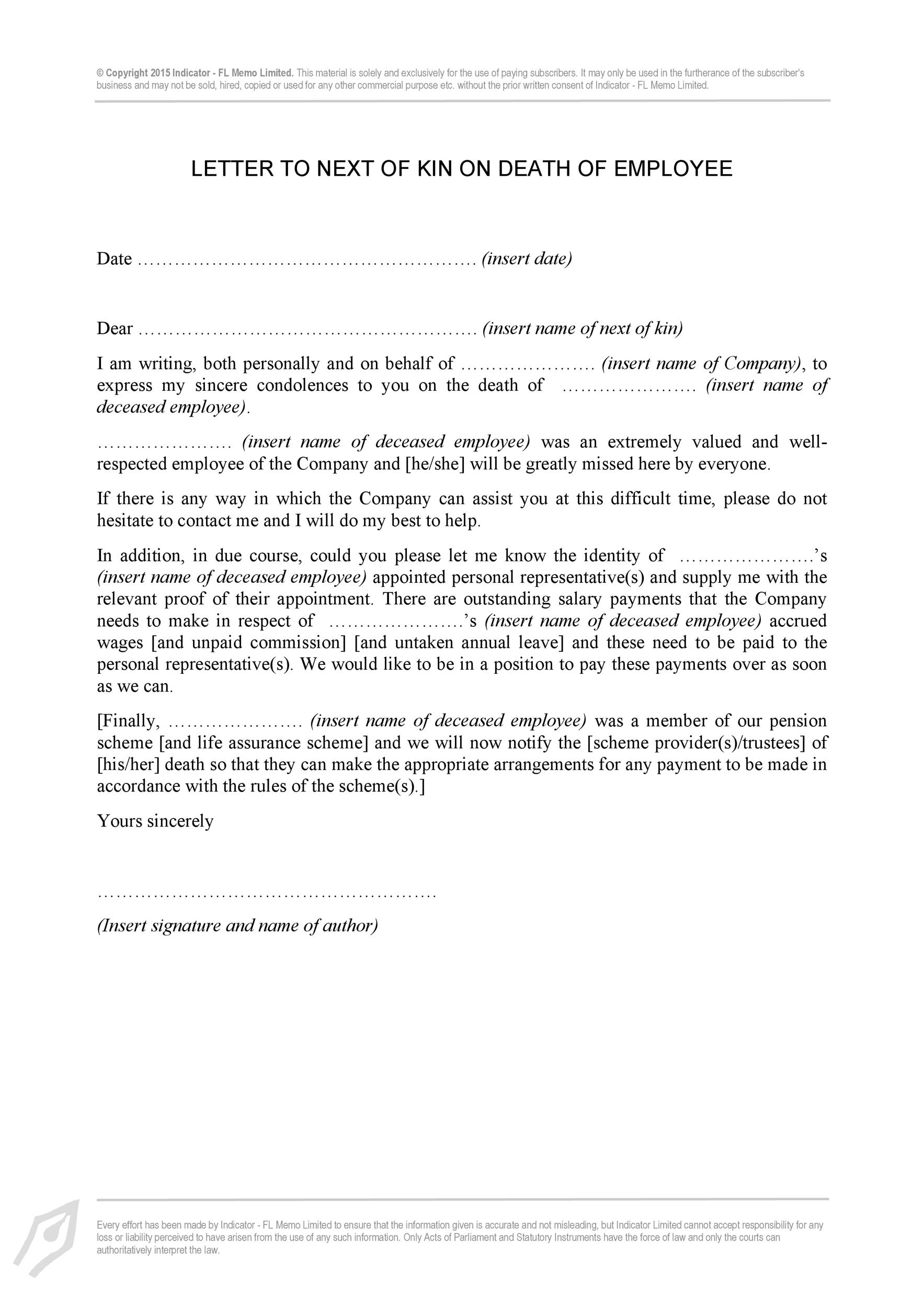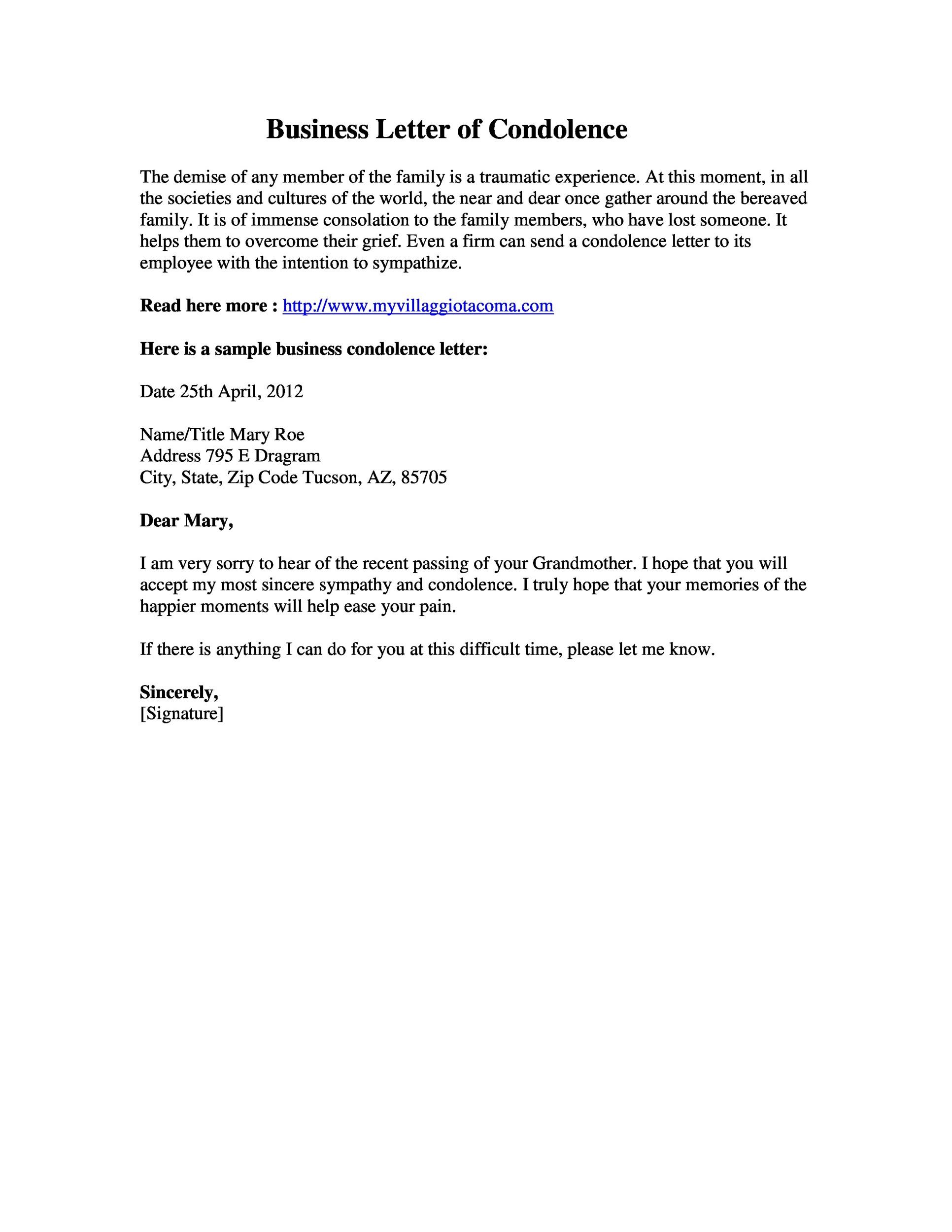When we learn about someone suffering a loss, we often think of ways to lessen the burden of that person or their family. Whether you are close to the person who has lost someone or not, you’d most likely think about sending a condolence letter. It may not seem like much but it may be able to give some sort of comfort to the person or persons who are grieving the loss of a loved one, if they know that they are in your thoughts.
Table of Contents
Have you ever thought about how to write a condolence letter? A sympathy letter may seem simple but a lot of thought and effort should be placed into writing one, for different reasons. Making such a letter would mean that you care for the person you are sending it to so you should think about the right words to say to be able to convey your message without causing negative feelings.
Finding just the right words to convey your message or express your condolences to someone can sometimes feel quite challenging, which is why a lot of people choose to purchase a sympathy card which already comes with a message and send that instead. However writing such a letter may have a bigger impact on the person you send or give it to as it would be more personal and the recipient would know that you had actually put in time and effort into writing the letter.
This article talks all about this type of letter such as the basic elements as well as some guidelines and techniques when writing one. It may serve as a guide for you especially if you find yourself at a loss for words as you are also feeling the sadness of the loss.
Sample Condolence letters
Elements of a Letter of Condolence
When you are considering writing a letter of condolence, you’d be writing more than just a sympathy note. Typically people who write and send such letters are closer to the person who has suffered a loss and may even know the person who had actually passed away. In writing a letter like this, there is no strict format but there are some important elements which would make it effective. When writing, you may either make use of all these elements or just a majority of them.
- Acknowledge the loss and when you are referring to the person who has passed away, use their name. You don’t have to use vague sentences or phrases just to avoid the fact that there was a loss because the recipient already knows that. Instead, acknowledge the loss and try giving words of comfort to help them deal with the sad situation. It would be a good idea to express words of sympathy, say some nice things you remember about the deceased along with your favorite memory of him/her. Then you can go on reminding the recipient of his/her strengths and how they can be used to go through this difficult time.
- Offer a specific kind of help to the bereaved. Think about practical and specific ways you can help out the person you are sending the letter to. Whether it’s something as simple as bringing refreshments to the wake or something as big as taking care of the transportation during the funeral, it would probably a big help to the family of the deceased and they would appreciate it a lot.
- End your letter with a thoughtful hope or expression of sympathy. Use a phrase or a sentence rather than just a single word so that it would seem more personal and sincere.
There are only a few essential elements but adding them in would make your letter a lot more meaningful and heartfelt. Now let’s take a look at some guidelines in writing which may be able to help you out.
Example of Condolence Letter
Some Guidelines in Writing Condolence Letters
As you are thinking of writing a condolence letter to someone who had just suffered a loss, a lot of things may be going through your head. You may have a lot to say, too much actually, that you are feeling overwhelmed. Here are some guidelines to help you out:
- Before you even start writing a sympathy letter, it would be important to note that you should be doing it at the soonest possible time so you are able to send it or hand deliver it promptly. Remember, when someone dies, the remaining members of the family would only have a specific timeframe for the wake and funeral services so you don’t have that much time to come up with a good letter.
- It would be a lot better if you write your letter by hand on a nice piece of paper or stationary rather than just typing it and printing it on a computer. If you are better at composing letters through typing, you can do so then just copy the content by hand. Doing this would require more effort but it would give a bigger impact and would be a lot more meaningful gesture.
- When you are writing your letter, do so in your own voice, as if you were speaking directly to the person you’re writing the letter to. You don’t have to copy templates just to seem more articulate as it might actually give the impression that it’s a bit too bland. When you’re writing to a person you know, chances are he/she would know how you would say things and how you would express yourself.
- Keep your letter short, but heartfelt and thoughtful. You don’t have to write a full page letter as the recipient might not actually have the time or strength to get through it. Add in some fond or funny memories of the deceased to lighten the tone and lift the spirits of the recipients by giving good memories.
- Be sure to keep in mind religious beliefs. No matter what the family of the deceased believes in, they still deserve sympathy.
- Sign your letter with your full name. This is especially important when you are writing to a friend of the family as other of your relatives or family members may send letters as well.
- Never discuss money matters in your letter. Even if the person who passed away may have owed you money, you don’t need to mention it in your letter. If you want, you can speak to the members of the family about it after an appropriate amount of time has passed. Also never offer financial help or assistance in your letter as it might be interpreted differently. If you do want to offer help, be more practical – offer to do some chores or to provide a home cooked meal.
- Inform the recipient of your letter how you had heard about the deceased and how you felt and reacted when you heard the news at the beginning of your letter. This would set the tone of your letter and remember to refer to the deceased by name.
- At some point, you can reflect on some qualities of the person who had passed away which you really admired. It would provide great comfort to the family of the deceased knowing that these good qualities were appreciated.
- Also try to share a good memory of the person who had passed away. When the recipient reads about such good memories, it would remind him/her of their own good memories with the deceased.
- To make your letter even more personal, you can send a photo of yourself with the deceased, if you have one. Then at the back of it, write a short description of what’s seen in the photo. Also, you can add in some appropriate humor to your letter, just enough to lift the spirits of the person who will be reading it.
- Provide comfort and reassurance to the bereaved, reminding him/her of how strong he/she is and how you believe of the ability to cope with the difficult situation.
- Say everything you’d like to say in your letter as long as you believe it is appropriate. You may be feeling emotional at the time you are writing the letter so when you’re done, read through it again to check if there is anything you can add or anything you can omit, which you think doesn’t need to be included in the content of your letter.
No matter how long your letter would be (though not too long, of course), remember to be sincere as you are writing it. It may also help you cope as you are trying to comfort someone else and you are remembering good things about the person who had died. Now let’s move on to how you would actually compose your condolence letter.
Condolence Letter Templates
Different Techniques on How to Write a Condolence Letter
When writing your letter of condolence, you can do so using techniques. These steps and techniques can serve as a guide for you or if you are quite articulate, you can make the letter yourself. Here are some steps to help you out:
In Starting Your Letter
Begin writing your letter shortly after you hear the news of the deceased. You would have to send or give your letter at least within 2 weeks from when the person passed away. However if you had heard of the news late (like months or years after it happened), you can still go ahead and write the letter but you don’t have to explain why it’s late.
From the very start, be sure to set a personal tone to your letter. You can do so by expressing your sympathies and using the name of the deceased. This would seem more sincere to the recipient rather than if you would start your letter with a “general” greeting.
Be very sensitive to the situation of the recipient. Remember that he/she is going through a very difficult time so think about your statements and sentences very well. Never give advice on how to grieve or how to cope in your letter as it may be interpreted differently. Also try to avoid using religious opinions or references, unless you are sure you share the same opinions and beliefs.
In Writing the Body or Content of Your Letter
The main reason you are writing the sympathy letter is to express your condolences so don’t dance around the subject. This should be the very first part of the body of your letter. Express your condolences and refer to the deceased by name to give it a personal touch.
Express or write about how you are feeling about the loss. If you feel sad, talk about it, especially if the person who had passed away was close to you or you are close to the person who had lost someone. Let the recipient know that the death of their loved one has also made an impact on your life, but don’t continue on to make the whole letter focused on you. Just write a short paragraph about how you are feeling then bring the topic back to the deceased and the family left behind.
So that your letter won’t be too somber and won’t bring even more sadness to the person you are writing to, try to include fond memories. The person who will be reading your letter may enjoy reading about good stories and nice memories about the person he/she had lost. It would also remind the recipient that the deceased had in fact touched the lives of other people in great ways. In a way, you are trying to comfort the recipient indirectly, by sharing happy memories amidst the sad situation.
In Wrapping Up or Ending Your Letter
When you’re done with the main content of your letter, it would be time to start wrapping it up. Before you do, though, you can add in an offer to help the person you are writing to.
Dealing with the death of a loved one requires a lot of effort as a lot of different tasks are involved in dealing with the wake and the funeral – all which need to be done while coping with the sadness of the loss. So you can think of doing something nice for the person and add that into your letter. The thing to remember though is to be specific in your offer. If you add in a general statement, the recipient might not believe you are sincere in your offer so make it specific and practical.
Don’t make your letter so long that the recipient might not even read your letter until the end. Keep your letter short as the recipient (and the family of the deceased) will probably be reading a lot of letters or emails and getting a lot of phone calls over the next few days or weeks so they won’t have time for long, wordy letters. Also, if you put too much information, it might actually turn out to invoke negative feelings rather than comforting ones.If you’re at a loss for words or you’re not very good at composing letters, try adding in a quote or two – but only if you find it too challenging to find the right words. You can add a quote by the end of your letter, one which would somehow end it in a positive tone.
Finally, end your letter by giving words of comfort. A simple sentence or phrase which would show that you’re supporting them throughout the process of healing. After that, sign your letter with your full name.
As you can see, learning how to write a condolence letter isn’t very complicated. The most important thing actually is the effort, sincerity and emotion you put into it. When you are writing a letter to someone who has recently suffered a loss, your heart should take over more than your mind. Since you probably know the person you are writing to, you would also probably know what they would appreciate and what may put them off or offend them. So keep that in mind when you are writing your letter so that you can come up with something which will provide comfort.
Sympathy Letters
Writing on a Sympathy Card
If you really don’t want to have to go through the whole process of writing a letter, you can opt to write a short message on a sympathy card. These cards usually already come with a message and all you would have to do is add to it. Here are some tips to help you write on a sympathy card:
- When you are at the store, go through the different cards and select the one which you think would fit the situation and the recipient perfectly. Make sure the card was meant for the purpose and never pick one with a funny or inappropriate message.
- When you are writing on the card, write down your full name to let the recipient know who you are and how you know the person who had passed away. Send the card to the person you know who is related to or is a friend of the deceased, if you didn’t know the deceased person personally.
- Make sure to use correct spelling and grammar when you are writing in your card. If you want, write your message on a scrap piece of paper first, have it checked then copy the message onto the card.
- Express your feelings in your message and share fond memories you have with the deceased.
- Write a short sentence about what kind of help you would like to offer to ease things or to help out in the very difficult situation the family is dealing with. The help you would offer would depend on how close you are to the recipient.
- You don’t have to go “generic” just because the situation is uncomfortable or sad. You can put your own personal twist on your card or message to make it unique, just as long as it’s appropriate.
- Finally, send or give your sympathy card to the person it is intended for at the right time, sometime during the wake or the funeral, when your words of comfort can still have an impact on the recipient.















































